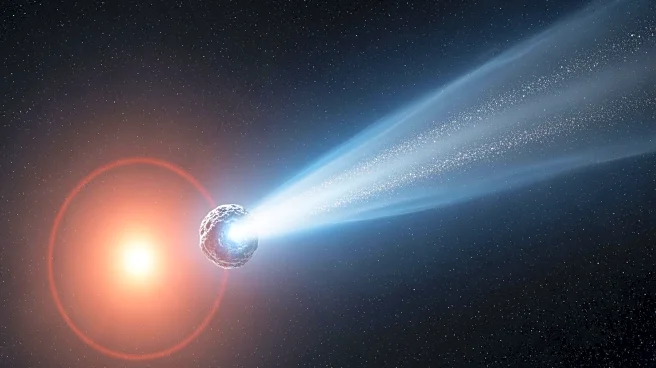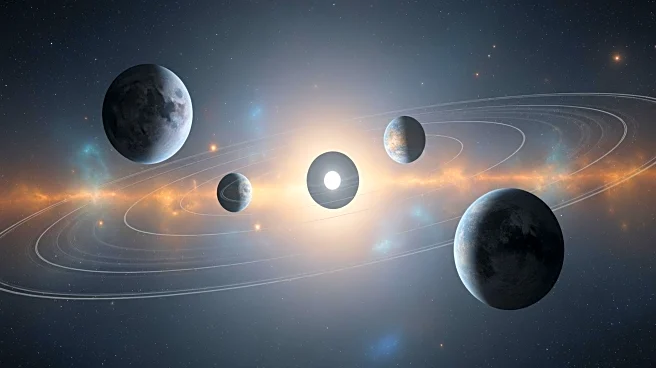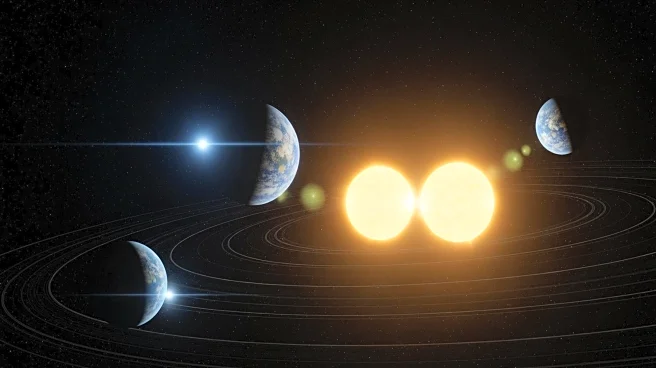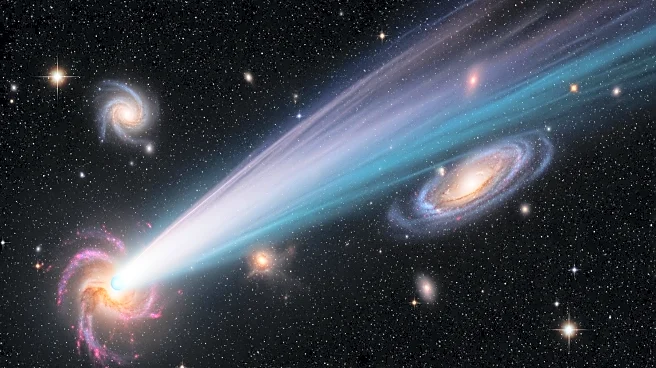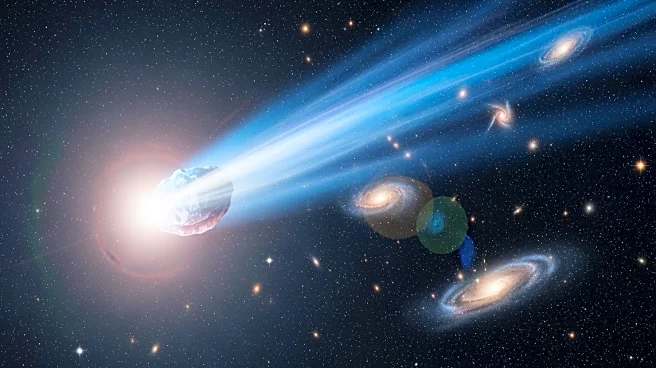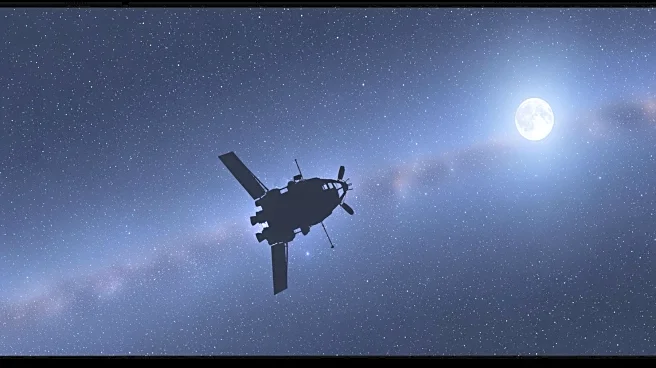What's Happening?
NASA's Transiting Exoplanet Survey Satellite (TESS) has discovered three Earth-size exoplanets orbiting a binary star system, TOI-2267, located about 190 light-years from Earth. This system features two
stars, each with planets transiting them, marking the first known binary system with transiting planets around both stars. The discovery challenges existing models of planet formation, which suggest that the gravitational instability in such compact binary systems should prevent planet formation. The planets' potential for dual sunsets evokes imagery reminiscent of the fictional world of Tatooine from Star Wars.
Why It's Important?
The discovery of these exoplanets in a binary system provides a unique opportunity to study planet formation and stability in environments previously thought to be hostile to such processes. Understanding how these planets formed and survived in a dynamically complex system could offer new insights into the diversity of planetary systems in the galaxy. This research could also inform future studies using advanced telescopes like the James Webb Space Telescope, which may further explore the atmospheric chemistry and physical characteristics of these planets.
What's Next?
Future observations with ground-based observatories and space telescopes will aim to measure the masses, densities, and atmospheric compositions of the TOI-2267 planets. These studies will help refine models of planet formation and stability in binary systems, potentially leading to new discoveries about the conditions that allow for the development of habitable worlds. The findings could also guide the search for life beyond Earth by identifying environments where Earth-like conditions might exist.


